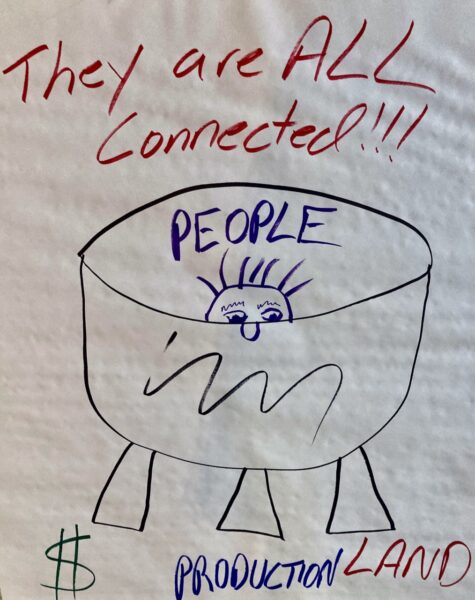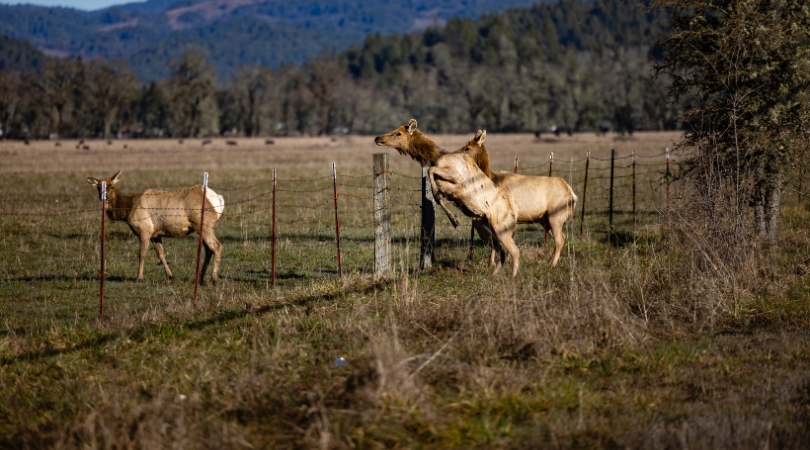“That won’t work here.” Yep. Heard those words before … when you come from a family that adopted artificial insemination into their commercial beef herd in 1975, practices Holistic Management, incorporates the Savory Grazing Method onto their lands, and implements windrow grazing in elk country, you get used to those words. Over the years they have lost their sting. But when those words are coming from a highly respected member of the Ranching for Profit community and one of my mentors, well, they just hit differently!
The ”that” my mentor was referring to, was our family’s strategy of using a full season of deferment on 1/3 of our upland pastures. It acts as a drought reserve and a buffer against destocking in poor markets, but it’s also how we accomplish full recovery in our environment. My mentor was making the very logical case that we were understocked in the majority of years just to be overstocked in the 20% of the years when we should actually be destocking due to drought. On the surface, those are rock-solid arguments. In our case, though, we had information and experience telling a different story. We had (have) monitoring data showing that our rangelands were (are) improving and supporting more SAU than under the previous 1-year recovery strategy. We had financial records of the expense associated with destocking and restocking in the 2002 drought as compared to the additional profit we enjoyed in 2014 after so many people were forced to destock following the 2012-13 drought. And we had our vision; ecosystem adapted genetics in a healthy landscape.
In the Ranching for Profit school we teach about peer pressure and status quo bias. We show a great video demonstrating the power that herd mentality has in swaying our actions. We discuss how the opinions of friends, family, and neighbors have a particular power in setting our own paradigms. Those ideas aren’t taught to convince people to adopt a new status quo or create a different peer group. We teach them to make people aware of the existence and power of the status quo and peer groups. I have found there are several large peer groups within agriculture. Some of them are ideological, while others are more about practices. These include regenerative, traditional, buckaroo, holistic, etc. Every group has their own set of paradigms and their own status quo. By understanding this I was able to see that my mentor wasn’t saying anything “wrong.” He was simply following his paradigm. What he knew to be true. And as a great friend and mentor, he was looking out for my best interest using the best information he had.
We owe it to our businesses to beware and be aware of status quo bias and peer pressure, though we must do so with an open mind. Everything achieves balance, and if status quo bias is on one side of a coin, then arrival syndrome surely lies on the other. Arrival syndrome is becoming so sure of our own paradigms that we are no longer willing or able to challenge them. Even worse, getting to the point that we do not allow others to challenge them. Somewhere between the extremes of status quo bias and arrival syndrome is the “sweet spot” where we can keep our businesses healthy, dynamic, and fresh. But how do we find the “sweet spot?”
It starts with a clear vision, which includes the four resources of the pot (taught at our school) made up of people, land, animals, and money. It ends with the feedback loop; plan, monitor, and manage.

When I heard that seasonal deferment wouldn’t work, we were able to quickly test it against our vision. We had previously planned our grazing around a single year paradigm, had monitored the results, and found ways to maximize the upside and minimize the downside through our management. Ultimately, this led us to the paradigm of seasonal deferment, and the ability to rationally resist the status quo bias.
In today’s world of polarization it is more important than ever to understand the context of our own, extraordinarily unique businesses. It is imperative that we never stop learning and that we stay open to as much new information as possible. As business owners, though, it is our responsibility to use that new information in a manner that moves our people, our land, our animals, and our money closer to our vision. That’s when we know we are Ranching for Profit.



